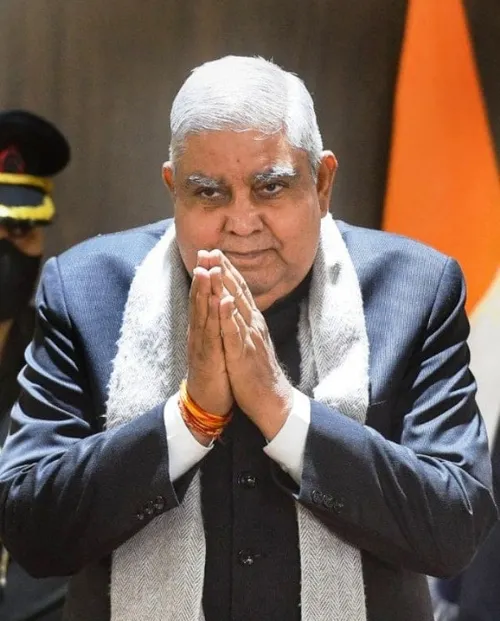
More than 50 per cent of our schools do not have access to modern information and communications technology
| Photo Credit:
KUMAR SS
India’s education system has been known to draw criticism on several counts. One is the lack of access to basic amenities and adequate infrastructure and other is the consequential rise in dropout rates. However, one important criticism that warrants discussion is the growing digital divide in Indian schools. Recently, the Ministry of Education released the Unified District Information System for Education Plus (UDISE+) 2023-24 report that discusses the infrastructure gap in Indian schools, particularly the burgeoning digital divide. The report indicates that functional computers are available in only 52.7 per cent of schools. Similarly, the internet is accessible in only 53.9 per cent of schools.
The UDISE+ report of the earlier years also indicates the continuing struggle in terms of digital infrastructure. Per the report for 2021-22, only 44.9 per cent of schools had computers and only 33.9 per cent had internet connectivity. There has been a delay by the Ministry of Education (MoE) in releasing the data for 2022-23 and 2023-24, which were made available only on December 30, 2024, after a gap of two years.
The marginal increase in digital accessibility in rural schools presents a disappointing reality as essentially more than 50 per cent of our schools do not have access to modern information and communications technology (ICT) despite proclaimed increases in investment in education both by Centre and the States. This means much of our student population is unable to utilise online resources for educational purposes. An online survey by the NGO Child Rights and You (CRY) during the pandemic revealed that a majority of children enrolled in schools did not have access to online classes. Even post the pandemic, the children continue to be deprived of digital access. A hybrid model of learning is being practised as it facilitates easier access to high-quality educational material.
Despite an overall increase in digital penetration, why has this divide been growing? Replying to a question raised in Parliament, the MoE stated that rural schools are behind urban schools in terms of internet connectivity by 29 per cent. Similarly, 68.7 per cent of urban schools have access to digital infrastructure against 44.9 per cent of rural schools. This indicates that a gap of 23.8 per cent exists between urban and rural schools. This is due to the government’s failure to recognise and address the difference in availability of resources, especially access to robust digital infrastructure between urban and rural schools.
Lumbering along
The Digital India School programme under the Digital India Campaign has failed to make any impact in rural schools due to poor internet connectivity. The BharatNet Project, introduced in 2011, targeted to provide high speed broadband connectivity in 6.3 lakh rural villages. The target has been revised several times since. In 2020, it was announced that six lakh gram villages would be connected by May 12, 2023. However, as of October 2024, only 2,14,283 gram villages have been connected under the project; the completion of the project has now been revised to 2025. Ministry of Communications data show that urban tele-density and rural tele-density stood at 133.72 per cent and 59.19 per cent, respectively, as of March 31, 2024. This shows that there is substantial difference, of 74.53 percentage points, between tele-density in rural and urban areas. Overall, the average tele-density is 85.69 per cent.
Linked to the above is the availability of quality electricity supply in rural areas and the schools located in them. The UDISE+ report shows that 89.7 per cent schools have access to functional electricity. However, transmission and distribution losses often result in power outage in rural areas. If a school does not have steady power supply or other basic amenities such as drinking water, there is a good probability that it will also lack digital infrastructure. Even if the school does have digital infrastructure, lack of access to electricity will render it redundant. Fixing the lack of basic amenities is the first logical step as only then can the government proceed with providing/improving the digital infrastructure.
Way forward
As of now, India’s current expenditure on education is only 3 per cent of its GDP. This has resulted in several challenges for the education sector including the growing digital divide. Over the years, there have been repeated calls by experts and industry leaders for increased budgetary allocation for the education sector to 6 per cent of GDP which has also been recommended in the National Education Policy of 1998 as well as 2020.
Bridging the digital divide in rural areas and by extension rural schools can be achieved if the government envisions and implements a joint partnership with NGOs working at the grassroots level. Their input about the lack of basic amenities such as electricity can be a good starting point for the government to determine how to go about the task of improving digital access in rural schools. They can also help any initiative to address the digital divide and be affordable through proper training.
The writer, a former CAG bureaucrat and Rajya Sabha MP from Odisha, is an advocate by profession
Published on May 25, 2025
Anurag Dhole is a seasoned journalist and content writer with a passion for delivering timely, accurate, and engaging stories. With over 8 years of experience in digital media, she covers a wide range of topics—from breaking news and politics to business insights and cultural trends. Jane's writing style blends clarity with depth, aiming to inform and inspire readers in a fast-paced media landscape. When she’s not chasing stories, she’s likely reading investigative features or exploring local cafés for her next writing spot.





